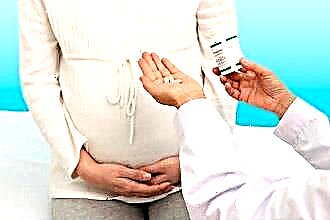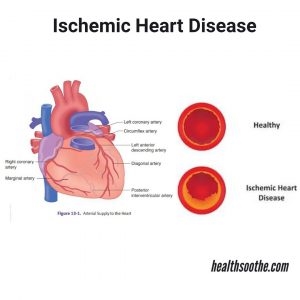Inflammation of the earlobe occurs most often due to the influence of local factors (trauma, development of neoplasms, exposure to pathogens). Although in some diseases, the tip of the ear can be involved in the general process and react to the presence of pathogens throughout the body. If the earlobe inflammation is responded to in a timely manner, treatment is usually quick and successful.
Traumatic causes
 The main cause of inflammation in the lobes is their puncture for wearing jewelry. Often this procedure is carried out at home, without observing the basic rules of hygiene. To avoid problems, piercing should be done by a specialist, preferably a dermatologist, using a special "gun" that pierces the soft tissue with a sterilized earring.
The main cause of inflammation in the lobes is their puncture for wearing jewelry. Often this procedure is carried out at home, without observing the basic rules of hygiene. To avoid problems, piercing should be done by a specialist, preferably a dermatologist, using a special "gun" that pierces the soft tissue with a sterilized earring.
To reduce the likelihood of suppuration after piercing, you should follow a few simple rules:
- The newly punched holes are washed 2 times a day with hydrogen peroxide, saline or alcohol solution, followed by the application of a tampon with antibiotic ointments (levomekol, miramistin, tetracycline ointment). For the fastest healing, it is necessary to provide air access to the wound. After 2-3 days, these procedures can be replaced by washing with warm water and soap. The earring must also be disinfected.
- It is safest to wear earrings made of pure metals (gold or silver) without impurities. Some jewelry contains nickel, which is an allergen, which contributes to the development of contact dermatitis.
- For diseases such as diabetes mellitus, hemophilia, allergies or hepatitis, you should consult with an appropriate specialist, as in these cases, piercing may be contraindicated.
If, nevertheless, the earlobe is inflamed, what to do? If soreness, redness, oozing fluid, or crusting occurs, you can take the following actions:
 Change the disinfectant solution (use, for example, furacilin, chlorhexidine, propolis or calendula tinctures) and increase the frequency of wiping the affected area (at least 5 times a day). It is undesirable to remove the earrings recommended by the doctor, otherwise the formed canal may overgrow, after which the entire piercing procedure will need to be started from the beginning. If problems arise a month or later after the piercing, when the channel has already formed, for therapeutic measures, the jewelry can be removed.
Change the disinfectant solution (use, for example, furacilin, chlorhexidine, propolis or calendula tinctures) and increase the frequency of wiping the affected area (at least 5 times a day). It is undesirable to remove the earrings recommended by the doctor, otherwise the formed canal may overgrow, after which the entire piercing procedure will need to be started from the beginning. If problems arise a month or later after the piercing, when the channel has already formed, for therapeutic measures, the jewelry can be removed.- Mandatory use of antibacterial ointments, while you can choose the one that gives the greatest effect.
- In the absence of a positive result, you should consult a doctor for advice in order to avoid the appearance of keloid formations (scars). You will also need to be examined for allergies to certain metals.
Traditional medicine also offers a number of treatments for suppuration at the puncture site:
- Using oil-coniferous balm. Cow oil is melted with sap resin in a 1: 1 ratio. The wound is lubricated twice a day until it recovers.
- Aloe leaf is cut and applied with the wet part to the wound, fixed with a plaster, changed 4 times a day. Aloe has a strong bactericidal effect.
- Sprinkle the puncture with dried horsetail powder with a light bandage.
In addition to piercing, traumatic causes of suppuration include a cut (for example, when shaving), a scratch, or an animal or insect bite.
Erysipelas
 If the earlobe is inflamed, and redness spreads to the entire auricle, then the cause may be erysipelas, a disease caused by hemolytic streptococcus. It manifests itself, as a rule, due to a decrease in immunity or infection through trauma, cuts or scratching (suppuration is especially dangerous with otitis media).
If the earlobe is inflamed, and redness spreads to the entire auricle, then the cause may be erysipelas, a disease caused by hemolytic streptococcus. It manifests itself, as a rule, due to a decrease in immunity or infection through trauma, cuts or scratching (suppuration is especially dangerous with otitis media).
Symptoms of the disease:
- swelling and hyperemia of the entire auricle, including its soft part;
- a sharp increase in temperature (up to 40 degrees) and chills;
- soreness when feeling;
- burning;
- the appearance of bubbles containing serous fluid (bullous form).
It is the involvement of the lobes in the infectious process that is a clear distinguishing feature of erysipelas from chondroperichondritis (inflammation of the perichondrium). Depending on the severity of the disease and the promptness of the visit to the hospital, healing can last from 3-4 days to several months.
Therapy for erysipelas necessarily involves taking a course of oral antibiotics (erythromycin, amoxicillin, cephalexin, cefadroxil), in difficult cases - intramuscular penicillin. Local treatment consists in the application of 2% mupirocin ointment, lubrication with anti-inflammatory or indifferent ointments (for example, ichthyol ointment), ultraviolet irradiation. The use of antibiotics for several days relieves the main symptoms and improves the patient's well-being, but in order to avoid relapse, the full course of treatment should be completed.
Benign neoplasms
The lower part of the ear can also become inflamed due to suppuration of benign formations, which, in their normal state, do not cause serious problems to their carrier for years. However, it is still necessary to see a doctor so as not to miss a more serious illness.
Atheroma. This is a cyst of the sebaceous gland, clogged and swollen due to overflow of secretion. In the resulting cavity, called a capsule, epithelial cells, particles of frozen fat, small hairs, and cholesterol crystals gradually accumulate. Growing gradually, it can reach several centimeters in diameter.
The symptoms of atheroma are:
- round dense structure resembling a ball;
- the ability to move under the skin;
- painlessness;
- no differences between the surface of the skin above the ball from the surrounding areas.
 After a while, a small cyst is able to dissolve on its own. The growing one tends to suppurate, as evidenced by an increase in temperature and redness of the affected area, soreness of the capsule. This can cause an open sore to develop. It is useless to try to squeeze out atheroma on your own, except for painful sensations, there is a risk of abscess, formation of fatty phlegmon and ingestion of the contents of the affected gland into the blood.
After a while, a small cyst is able to dissolve on its own. The growing one tends to suppurate, as evidenced by an increase in temperature and redness of the affected area, soreness of the capsule. This can cause an open sore to develop. It is useless to try to squeeze out atheroma on your own, except for painful sensations, there is a risk of abscess, formation of fatty phlegmon and ingestion of the contents of the affected gland into the blood.
The only way out is surgical removal. In an uncomplicated case, under local anesthesia, the entire capsule is immediately excised. With pronounced suppuration, the contents of the cyst are first released, and then the remains of the capsule are removed. Sometimes the second part of the operation is performed a few days later, after the patient's condition has returned to normal. In the early stages, it is possible to remove atheroma using a carbon dioxide laser and high-frequency radio waves. The extracted contents of the cyst are sent for histological analysis to make sure that the neoplasm is benign.
Inflammation can also be caused by an epidermoid cyst, which is often confused with atheroma due to the similarity of the symptoms of the initial stage. It occurs due to an increase in the volume of rapidly dividing cells of the epidermis. An epidermoid cyst is capable of suppurating and even sometimes developing into a malignant tumor. The best treatment is surgery.
In addition, the earlobe becomes inflamed due to a common pus-containing pimple. In this case, the patient should treat the affected area with alcohol or other disinfectant solutions.If this does not help and signs of a boil appear (pain, fever, the appearance of a yellowish-white top of the necrotic rod), then you need to contact a medical institution.

 Change the disinfectant solution (use, for example, furacilin, chlorhexidine, propolis or calendula tinctures) and increase the frequency of wiping the affected area (at least 5 times a day). It is undesirable to remove the earrings recommended by the doctor, otherwise the formed canal may overgrow, after which the entire piercing procedure will need to be started from the beginning. If problems arise a month or later after the piercing, when the channel has already formed, for therapeutic measures, the jewelry can be removed.
Change the disinfectant solution (use, for example, furacilin, chlorhexidine, propolis or calendula tinctures) and increase the frequency of wiping the affected area (at least 5 times a day). It is undesirable to remove the earrings recommended by the doctor, otherwise the formed canal may overgrow, after which the entire piercing procedure will need to be started from the beginning. If problems arise a month or later after the piercing, when the channel has already formed, for therapeutic measures, the jewelry can be removed.

